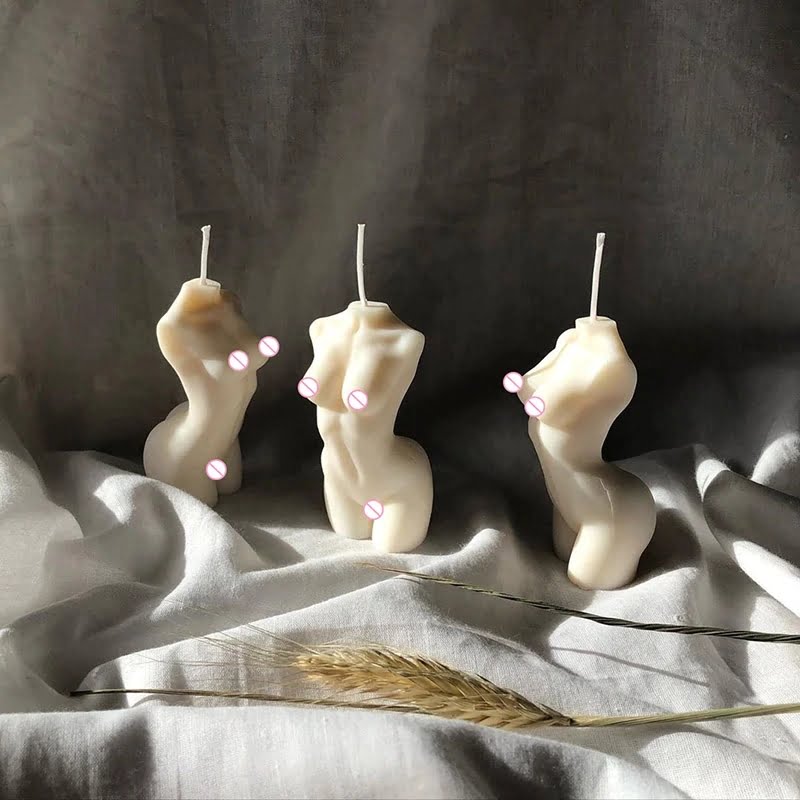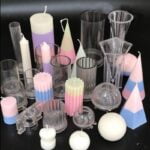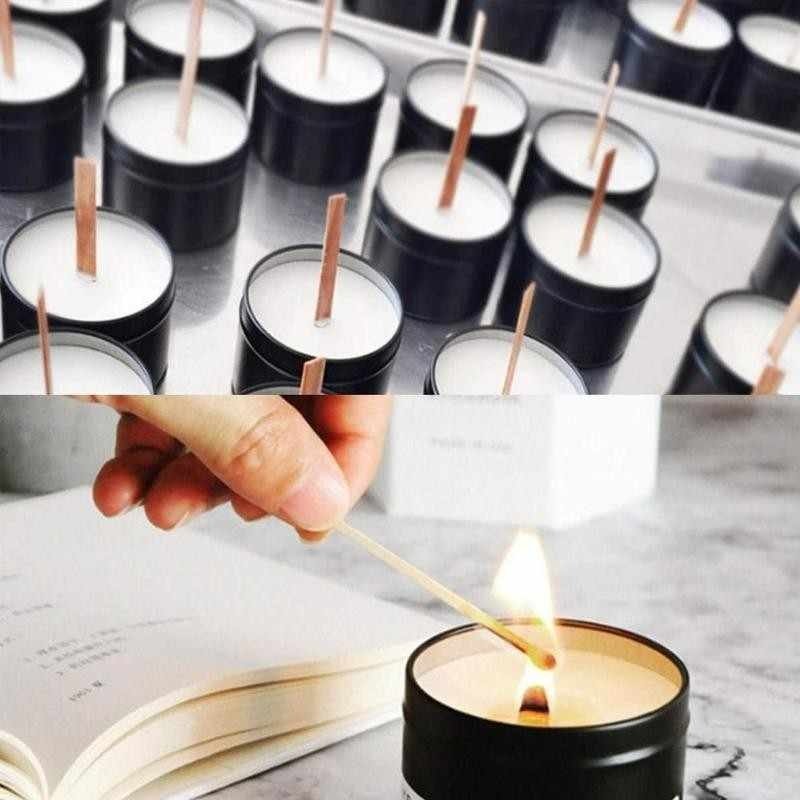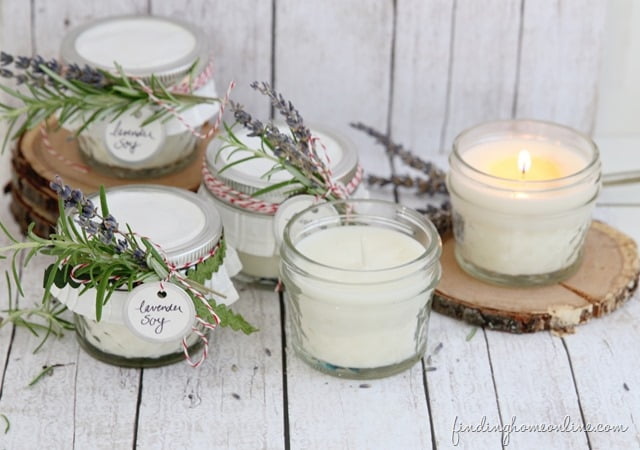Colonial candle-making equipment played a vital role in early American society, serving both practical and cultural purposes. From the rudimentary tools used by early settlers to the industrial revolution that transformed the production process, the evolution of candle-making equipment reflects the changing landscape of colonial life. In this article, we will delve into the rich history and significance of colonial candle-making equipment, exploring everything from traditional materials and techniques to modern-day replicas and preservation efforts.
The history of colonial candle-making equipment is a fascinating journey that highlights the ingenuity and resourcefulness of early craftsmen. By understanding the evolution of these tools and techniques, we gain valuable insights into the daily lives and societal norms of our ancestors. Furthermore, exploring the cultural and practical role of candles in colonial America allows us to appreciate their enduring legacy in modern times.
From beeswax to tallow, colonial candle-makers utilized a variety of traditional ingredients to create their products. Additionally, they employed a range of specialized tools and equipment to facilitate the production process, each with its own unique purpose and function. By examining these materials and tools in detail, we can gain a deeper appreciation for the craftsmanship and skill required in colonial candle-making.
The Evolution of Colonial Candle-Making Equipment
The history of colonial candle-making equipment is deeply intertwined with the development of American society from the early settlers to the industrial revolution. In the beginning, early American colonists relied on simple and rudimentary tools to produce candles for lighting and other practical purposes. These tools were often made from materials that were readily available in the colonies, such as clay, metal, and wood.
As time progressed and the population grew, there was a demand for more efficient methods of producing candles. This led to the development of more advanced candle-making equipment during the industrial revolution. With the invention of new technologies, such as mechanized dipping and molding machines, colonial candle-making became faster and more standardized.
One key piece of colonial candle-making equipment was the candle mold. These molds were typically made from tin or pewter and came in various shapes and sizes. The process of making molded candles involved melting tallow or beeswax and pouring it into the mold to harden. Once cooled, the molded candles could be removed from the mold and used for lighting homes or shops. The use of molds revolutionized candle production by allowing for mass production with consistent quality.
| Colonial Candle-Making Equipment | Evolution |
|---|---|
| Candle Molds | Tin or Pewter, various shapes and sizes |
| Dipping and Molding Machines | Mechanized technology for faster production |
Materials and Tools
Colonial candle-making in early America required specific materials and tools that were essential to the process. Beeswax and tallow were the two most commonly used ingredients for making candles during this time.
Beeswax, sourced from beehives, was considered a luxury item and often preferred for its pleasant scent, while tallow, derived from animal fat, was more readily available and affordable. In addition to these primary ingredients, colonial candle-makers also used wicks made from cotton or flax to ensure a steady burn.
In terms of equipment, colonial candle-makers relied on various tools to create their products. Large kettles or cauldrons were used to melt the beeswax or tallow, while molds made of metal or wood were utilized to shape the candles. The process also required dipping rods for repeatedly immersing the wicks into the melted wax or tallow to build up layers for larger candles.
Much of the traditional colonial candle-making equipment has been preserved in museums and historical sites across the country, providing insights into the techniques and tools utilized during this time period. Modern-day artisans have attempted to recreate these tools as accurately as possible in order to continue practicing this historical craft.
| Materials | Tools |
|---|---|
| Beeswax | Kettles/Cauldrons |
| Tallow | Molds (metal/wood) |
| Cotton/Flax (for wicks) | Dipping Rods |
This table showcases some of the key materials and tools used in colonial candle-making. These simple yet essential components played a crucial role in producing candles that served both practical and cultural purposes in early American society.
Candle-Making Techniques
Hand-Dipping Method
One of the most common candle-making techniques used during colonial times was the hand-dipping method. This process involved repeatedly dipping a wick into melted tallow or beeswax to build up layers of wax around the wick. Each layer would then be allowed to cool and harden before the next dip. This labor-intensive method required patience and skill to produce evenly shaped candles.
Molding
Another popular technique for making candles in colonial times was molding. This involved pouring melted wax into a mold, which was typically made of metal, wood, or ceramics. The mold would then be cooled until the wax hardened, and the resulting candle could be removed from the mold. Molding allowed for more uniform and consistent shapes compared to hand-dipping, but it also required specialized equipment and expertise.
Carving and Shaping
In addition to hand-dipping and molding, colonial candle-makers also utilized carving and shaping techniques to create decorative candles. Skilled artisans would use tools such as knives and molds to sculpt intricate designs into the surface of the candles, adding ornamental details that were highly valued during that time period.
These traditional candle-making techniques required a deep understanding of the properties of different types of wax, as well as precision in handling the materials and tools available at that time. Skilled craftsmen who were able to master these techniques played a crucial role in providing light and illumination for households, churches, and businesses during colonial times.
Today, these historical methods continue to be studied and recreated by artisans who strive to keep the tradition alive using replicas of colonial candle-making equipment.
Colonial Candle-Making Equipment Replicas
When it comes to understanding the history and importance of colonial candle-making equipment, modern-day artisans play a crucial role in preserving the legacy of this historical craft. Through the creation of replica tools and equipment, these artisans provide insight into the techniques and processes used by early settlers in America.
By studying and recreating colonial candle-making equipment, they not only pay homage to the traditions of the past but also contribute to the preservation of this significant aspect of American history.
Authentic Replicas
Artisans dedicated to recreating colonial candle-making equipment take great care in ensuring the authenticity of their replicas. By studying historical documents, illustrations, and artifacts, they gain valuable insight into the design and functionality of traditional tools. This meticulous attention to detail allows them to produce accurate replicas that provide a tangible connection to the past for historians, educators, and enthusiasts alike.
Preserving Traditional Methods
Creating replica colonial candle-making equipment also serves as a means of preserving traditional methods and craftsmanship. Through hands-on experience with these historical tools, modern-day artisans gain an appreciation for the skills and ingenuity of early candle-makers. This firsthand knowledge enables them to impart valuable insights into the challenges and techniques involved in producing candles during colonial times.
Education and Interpretation
In addition to crafting replicas for historical accuracy, modern-day artisans also contribute to educational initiatives and interpretation programs. By demonstrating how colonial candle-making equipment was used, they help audiences understand the significance of this craft within early American society. Whether through live demonstrations or interactive workshops, these artisans bring history to life by showcasing the tools and techniques that were essential for producing candles in colonial times.
The Significance of Colonial Candles
Colonial candles held great significance in early American society, serving both practical and cultural roles. The use of candles was essential for providing light in the colonial era, as electricity was not yet available. Additionally, candles played a crucial role in religious ceremonies, social gatherings, and household tasks. Understanding the cultural and practical importance of colonial candle-making provides valuable insight into the daily lives of early American settlers.
The cultural significance of colonial candles is evident in their use during religious services and ceremonies. Candles were often used in churches and religious rituals, symbolizing spirituality and divine presence. In addition to their religious significance, candles were also utilized in social gatherings and special events such as weddings, funerals, and celebrations. The warm glow of candlelight added a sense of warmth and intimacy to these occasions, creating a unique ambiance that modern lighting cannot replicate.
From a practical standpoint, colonial candle-making equipment was vital for providing light after sundown. Without access to modern electricity, colonists relied on candles to illuminate their homes and workplaces during the evening hours. Furthermore, candles were used for cooking, reading, and various household tasks that required adequate lighting. The availability of materials and tools for making colonial candles directly impacted the quality of life for early American settlers, highlighting the essential role that this craft played in everyday life.
- Cultural significance: Candles used in religious ceremonies and social events
- Practical importance: Providing light for household tasks without electricity
- Impact on daily life: Influence of candle-making equipment availability on quality of life
The tradition of making colonial candles continues to be celebrated today through historical reenactments and educational programs. Modern artisans strive to preserve the techniques and materials used by early settlers by recreating colonial candle-making equipment replicas. By understanding the cultural and practical significance of colonial candle-making equipment, we gain a deeper appreciation for the craft’s enduring legacy in American history.
Preservation and Display
Many museums and historical sites around the world feature exhibits that showcase colonial candle-making equipment. These displays provide a unique opportunity for visitors to learn about the history and cultural significance of candle-making in colonial times. Through these exhibits, people can gain insight into the tools and techniques used by early settlers to produce this essential household item.
Some notable museums with exhibits on colonial candle-making equipment include:
- Colonial Williamsburg in Virginia: This living history museum features demonstrations of traditional candle-making techniques using authentic equipment from the 18th century.
- The American Museum in Britain: Located in Bath, England, this museum houses a collection of colonial-era artifacts, including candle-making tools and equipment.
- The Farmers’ Museum in New York: Visitors to this museum can explore a recreated 19th-century village, complete with a working candle-making shop that showcases period-appropriate equipment.
In addition to museums, historical sites such as old colonial homes and traditional workshops also offer opportunities for visitors to view and learn about colonial candle-making equipment. These immersive experiences provide a firsthand look at how candles were made in early American society, enriching the understanding of this historical craft.
As technology continues to advance, it is crucial to preserve and display colonial candle-making equipment to ensure that future generations have the opportunity to appreciate and learn from this important aspect of history. Museums and historical sites play a vital role in maintaining these traditions and providing educational resources for those interested in the cultural heritage of candle-making.
The Legacy of Colonial Candle-Making Equipment
One of the most fascinating aspects of colonial candle-making equipment is how it reflects the values and daily life of early American society. The preservation of these historical tools allows us to better understand the cultural and practical significance of candles in the past, as well as their continued importance today. By examining replicas of colonial equipment, we can appreciate the craftsmanship and skill that went into creating these essential household items.
Museums and historical sites play a crucial role in showcasing colonial candle-making equipment, providing an immersive experience for visitors to understand its significance. Through these displays, people can gain a deeper appreciation for the history and evolution of candle-making, as well as recognize its enduring impact on contemporary artisanal practices.
Overall, the legacy of colonial candle-making equipment serves as a testament to the resilience and innovation of early American craftsmen, inspiring modern-day candle-makers to honor their heritage while embracing new techniques and technologies.
Frequently Asked Questions
What Did Colonists Use to Make Candles?
Colonists used various materials to make candles, including tallow (animal fat), beeswax, and bayberry wax. Tallow was the most common material due to its affordability and availability.
What Tools Were Used to Make Candles in Colonial Times?
Candlemaking in colonial times involved several tools such as molds, dipping cans, wicking needles, and cutters. Molds were used to shape the candles, while dipping cans allowed for the repeated dipping of wicks into melted wax.
What Were Candles Made of in 1700s?
In the 1700s, candles were primarily made of tallow or beeswax. Tallow candles were more common as they were cheaper to produce, while beeswax candles were considered a luxury due to their pleasant aroma and cleaner burning properties.

Welcome to my candle making blog! In this blog, I will be sharing my tips and tricks for making candles. I will also be sharing some of my favorite recipes.





